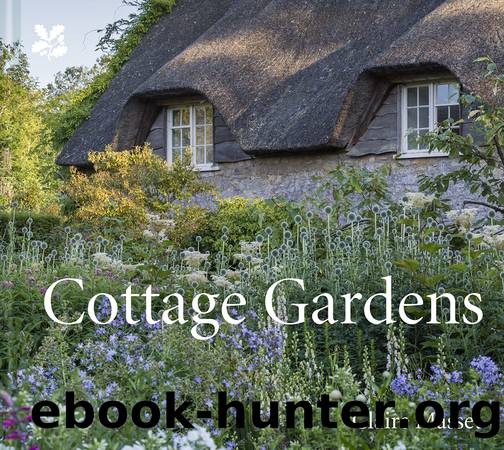Cottage Gardens by Claire Masset

Author:Claire Masset
Language: eng
Format: epub
Publisher: National Trust
Crocosmia âZeal Giantâ.
Dahlias look great both in flower borders and amongst vegetables.
Dahlias and cosmos pack a floral punch.
Dahlias are very tolerant, but they do best in rich, free-draining soil and full sun. Follow instructions for planting tubers and make sure you donât overwater them before growth appears or you may cause them to rot. As soon as they start growing strongly, pinch out the tip of the main stem to encourage bushy growth. The plants need to be supported with strong stakes.
For a splash of fiery yellow, orange or red, crocosmias are hard to beat. They originate from South America, and in their native habitat the pretty, funnel-shaped flowers are a magnet for hummingbirds. Clump-forming perennials, with slender, arching stems and handsome, sword-like leaves, they are both easy going and vigorous. Used sparingly, theyâre a great way to inject a touch of exoticism into the late summer cottage garden.
Daisy flowers really come into their own in August and not just because of all those cheerful sunflowers. There are, for instance, the echinaceas. These large, attractive daisies have hit the gardening spotlight in the last 15 years or so, being popular in prairie planting schemes, but they have actually been grown in cottage gardens since the species (Echinacea purpurea) was introduced into England from the United States in the late seventeenth century.
Echinacea flowers are large and come in pinks, purples, coral, orange, salmon, white and green, all with a prominent central cone, hence their common name, coneflower. Most are single, some are double, others are frilly, and a few have slender reflexed petals. Echinaceas thrive in any fertile soil in full sun. Bees, butterflies and birds love them and they make great cut flowers too.
Rudbeckias â another daisy flower â come in warm shades of yellow and orange. Most have dark contrasting centres, which explains why the species Rudbeckia fulgida goes by the name of black-eyed Susan. Rudbeckias like a sunny position and relatively fertile soil. So too do heleniums, known as sneezeweed because they were used to make snuff. These sunny flowers offer yet more yellow, orange and bronze hues, and have pretty, jagged petals and large, rounded centres. I find the rich coppery-red shades especially attractive, like H. âMoerheim Beautyâ, which looks particularly good with purple salvias. Young plants need protecting from slugs and snails.
Download
This site does not store any files on its server. We only index and link to content provided by other sites. Please contact the content providers to delete copyright contents if any and email us, we'll remove relevant links or contents immediately.
Kathy Andrews Collection by Kathy Andrews(10519)
The remains of the day by Kazuo Ishiguro(7551)
Spare by Prince Harry The Duke of Sussex(4195)
Paper Towns by Green John(4169)
The Body: A Guide for Occupants by Bill Bryson(3800)
Be in a Treehouse by Pete Nelson(3212)
Harry Potter and the Goblet Of Fire by J.K. Rowling(3043)
Goodbye Paradise(2962)
Never by Ken Follett(2880)
Into Thin Air by Jon Krakauer(2701)
The Remains of the Day by Kazuo Ishiguro(2617)
The Genius of Japanese Carpentry by Azby Brown(2609)
The Cellar by Natasha Preston(2595)
Drawing Shortcuts: Developing Quick Drawing Skills Using Today's Technology by Leggitt Jim(2532)
120 Days of Sodom by Marquis de Sade(2436)
Architecture 101 by Nicole Bridge(2350)
The Man Who Died Twice by Richard Osman(2298)
Machine Learning at Scale with H2O by Gregory Keys | David Whiting(2289)
Fairy Tale by Stephen King(2069)
